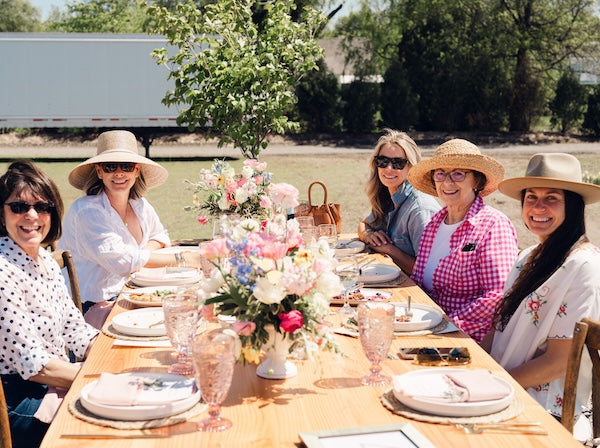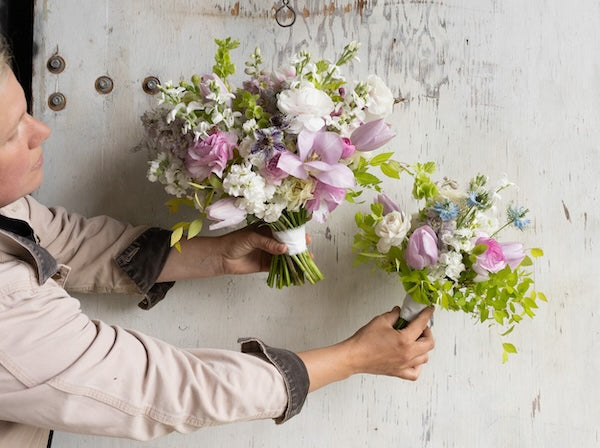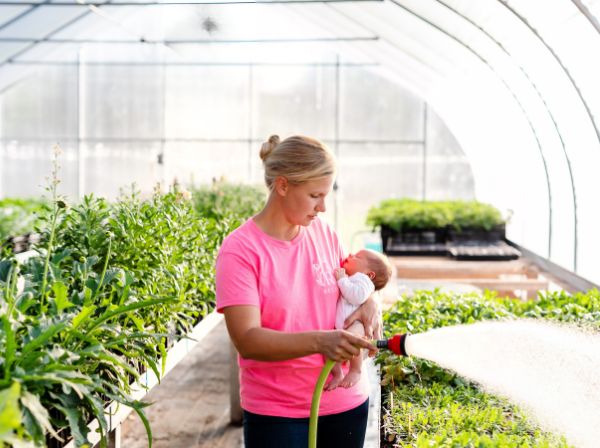- Book An Event
- FLOWERS & GIFTS
- GARDEN SHOP
- EXPERIENCES
- BLOG
- ABOUT
- Log in
How To Meet Cold Stratification and Dark Requirements in Seed Starting
March 09, 2023

Indoor seed starting is a common practice among gardeners who want to ensure their plants have a head start in the growing season. This is especially true for annual cut flowers, which can be grown from seed to bloom in just a few months. However, some annual cut flowers have special requirements when it comes to seed starting. In this blog post, we'll explore two of these special circumstances: cold stratification and dark requirements.

Cold stratification is a process that some seeds require to break their dormancy and germinate. It involves exposing the seeds to a period of cold, usually in a moist environment, before planting. This mimics the natural conditions that the seeds would experience in the wild during the winter months.
Some annual cut flowers that we use cold stratification with are poppies, larkspur, nigella, bells of ireland, and scabiosa. We even cold stratify eucalyptus. To cold stratify seeds, we start by placing them in a damp paper towel and store in the refrigerator for the recommended period of time, generally 2-4 weeks. The length of time required for cold stratification varies by plant species, so be sure to check the seed packet for specific instructions. When in doubt, cold stratify for a month.
Then, I’ll open the bag and rest it on top of my grow lights. I usually see roots forming within 48 hours. They are then planted into a cell tray and grown on under the lights.
Note: If it’s a cool loving flower, it likely needs some sort of cold treatment. When not sowing seeds, keep dry in the fridge.

We are all guilty of trying to start a seed that requires the dark to start but instead put them under lights or in direct sunlight. This is your time to turn it around! The absence of light triggers a hormonal response in the seeds that promotes germination. Seeds that require darkness to germinate are often small and fine, and are best started indoors.
Buplureum and cynoglossum are a must for us with dark requirements. By covering these seeds with a sheet of foil and achieve nearly 100% germination every time. Be sure to keep the soil moist, but not waterlogged, during the germination period. Once you cover with foil, you should not have to water again until a day or two after after it's been lifted.

Within 3-4 days at the proper temperature, expect little sprouts to start popping up. It's ok to lift the foil to check, but make sure to seal it up again. Once I see 80% germination, I'll remove the foil and place the sprouts in light. They will look pale at first, but green up within 24 hours.

If you're planning on starting annual cut flowers from seed indoors, it's important to be aware of any special requirements they may have. Cold stratification and dark germination are two common special circumstances that some annual cut flowers require. You will increase your chances of success and enjoy a beautiful bounty of flowers by following these tricks!
If your comment doesn’t show up right away, don't fret! We have a spam filter that requires we approve most comments before they are published.
Unable to post at this time.
Also in Farm Journal

Bloom & Brunch: A Mother’s Day to Remember
May 29, 2025
This past Motherʼs Day, we opened the gates to Rooted Flowers for our very first Bloom & Brunch, and what unfolded felt like something out of a dream. After weeks of gray skies and unpredictable spring weather, the sun showed up right on cue—and so did all of you.

A Pastel Spring Wedding at Valley View Farm
May 27, 2025
This past weekend, we had the pleasure of designing wedding florals for a stunning celebration at Valley View Farm in Haydenville, MA. From seed to centerpiece, every flower was grown right here on our farm in Agawam, MA—a full farm-to-table floral experience for a couple who wanted something meaningful, local, and naturally beautiful.

Growing With Intention: How We Celebrate Earth Day Every Day at Rooted Flowers
April 22, 2025
At Rooted Flowers, we’re not following a traditional model. We’re building something entirely different—a way of working and living that reflects the rhythm of the seasons, honors the land, and keeps family, beauty, and sustainability at its core.
Quick Links
Follow Us
We a family-run speciality cut flower farm growing in the Pioneer Valley of Western Massachusetts.
Our self-serve farmstand is located at 501 Shoemaker Ln, Agawam, MA 01001. We are open everyday with a fresh restock at 10 am.
Find us on Google Maps or Apple Maps
News & Updates
Sign Up For Our Newsletter
© 2025 Rooted Flowers. © COPYRIGHT ROOTED FLOWERS LLC 2024

